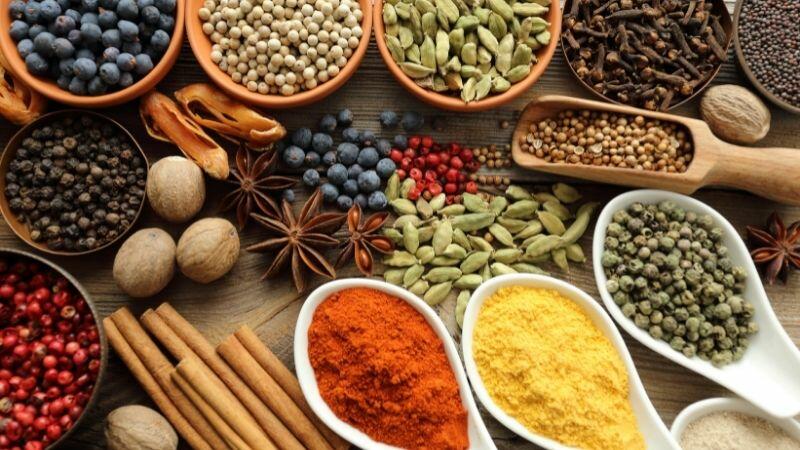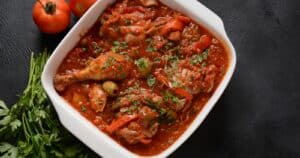The cuisines of the Middle East are renowned for their bold flavors and aromatic spices. Whether you’re cooking traditional dishes or experimenting with Middle Eastern-inspired recipes, using the right mix of spices is key to producing authentic and delicious results. This guide covers the most essential spices used in Middle Eastern cooking that belong in every well-stocked pantry.
Here are the most common spices Middle Easterners use for spicy food cooking:
- Aleppo Pepper – Spiciness 8/10
- Paprika – Spiciness 7/10
- Allspice – Spiciness 6/10
- Black pepper – Spiciness 7/10
- Sumac – Spiciness 5/10
- Turmeric – Spiciness 4/10
- Cumin – Spiciness 5/10
But don’t leave yet! We talk about 2 more Middle Eastern spices that don’t rank highly on the “spicy scale”, but they can increase spiciness if you prepare them a certain way. So keep reading to learn more about the flavor profile and the role of different spices used in Middle East cooking.
1. Aleppo Pepper
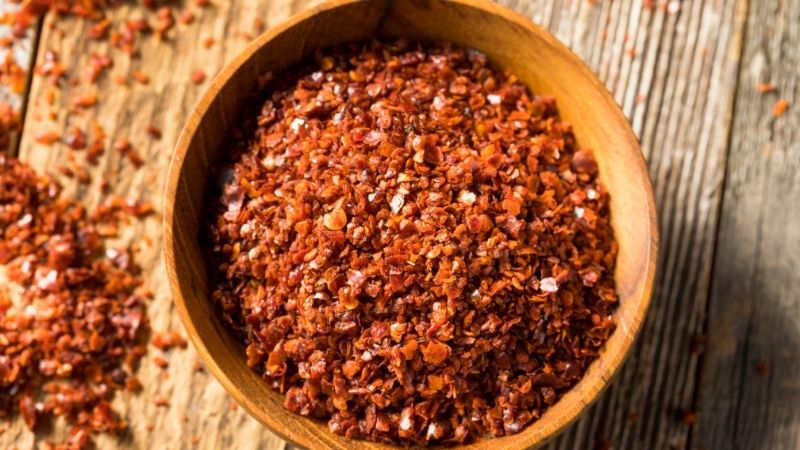
Undoubtedly, one of the spiciest peppers on the Middle Eastern spicy ingredient list, Aleppo pepper, is a
Aleppo pepper is used in specific Arabic dishes only when the chef is sure that exceptionally spicy food is required. It is added alongside tomatoes in the sauce-making stage of Arabian cooking.
Since most stew and wet foods involve making a soup or a sauce and then saturating it with another ingredient like bread, rice, or stuffing, there are plenty of opportunities to use Aleppo pepper in Middle Eastern cooking.
There are three ways to add Aleppo pepper:
- Flakes – These are added the same way as red pepper flakes.
- Powder – Ground peppers can be used as a fine powder in the sauce-making stage
- Whole pepper – To reduce the spiciness of the overall dish, you can add the pepper whole to have a lower surface area.
In some instances, you can swap Aleppo pepper for red chili to get the spiciest possible version of a dish. However, this is not standard practice, even in spicy food cooking in the Middle East.
2. Paprika
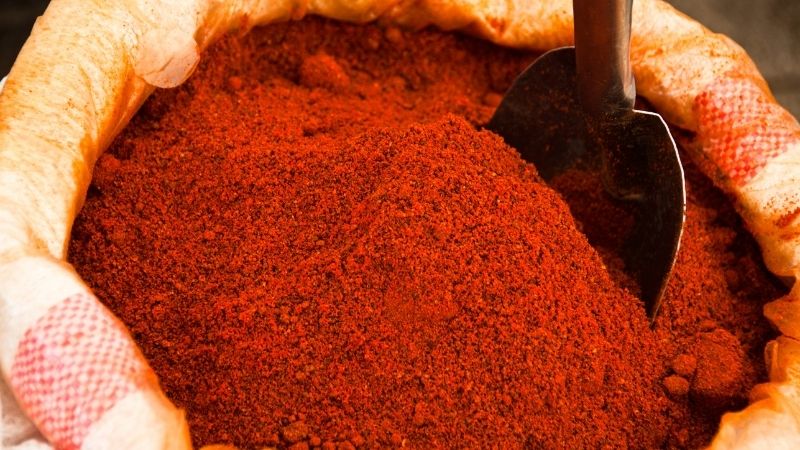
Paprika is one of the few spices in the Middle Eastern ingredient roster that you don’t need to substitute to make a dish spicier. Cumin is often replaced with dried coriander and black pepper mix to make the dish spicier.
Similarly, allspice is replaced with nutmeg in some recipes. But since Paprika can range from mild to pungent, you can simply change the degree of heat of Paprika to get a spicier dish. The Paprika used in Tunisian, Algerian, and Moroccan cuisine is noticeably hotter than the one used in Saudi Arabia and the UAE.
3. Allspice
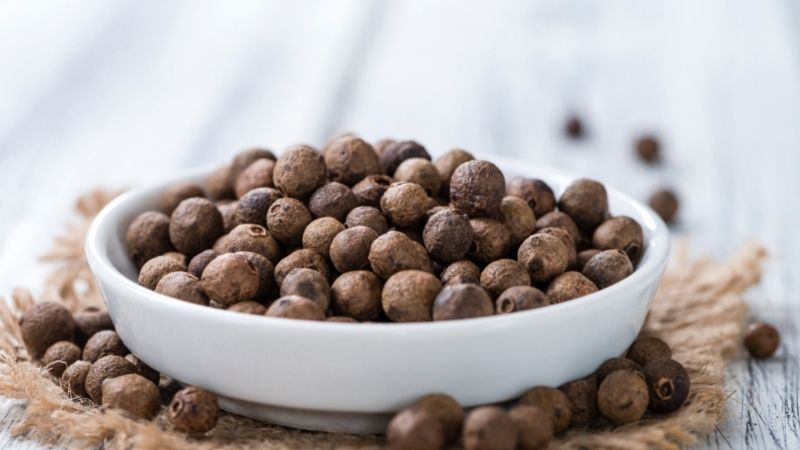
This
Allspice isn’t hot but has a bite to it.
When ground and added to a stew or a sauce, it raises the Picante levels of the final dish. However, most standard Middle Eastern dishes use whole dried berries, which reduces the temperature of the dish.
4. Cinnamon
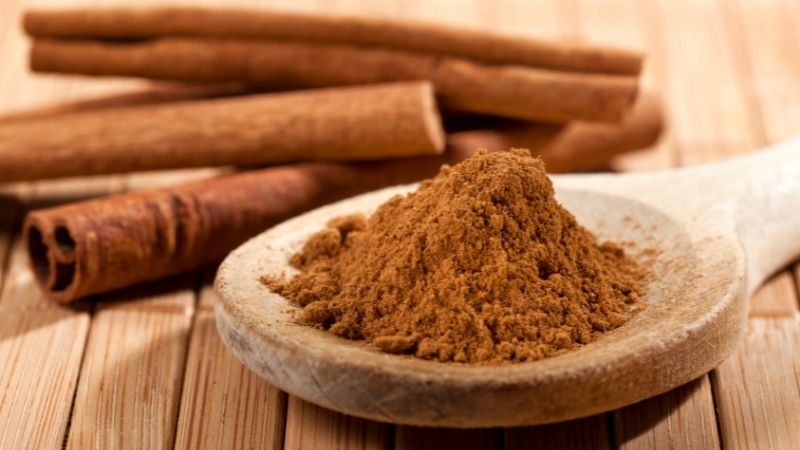
You typically find cinnamon in desserts, fragrances, oils, and even coffee in the West, Middle Eastern use of the spice is quite specific to main courses.
Powdered cinnamon would make Middle Eastern food too spicy, so whole cinnamon quills are used in rice and stews. Boiling cinnamon and using the water as a soup base can also increase the overall heat of a Middle Eastern stew dish.
5. Black Pepper
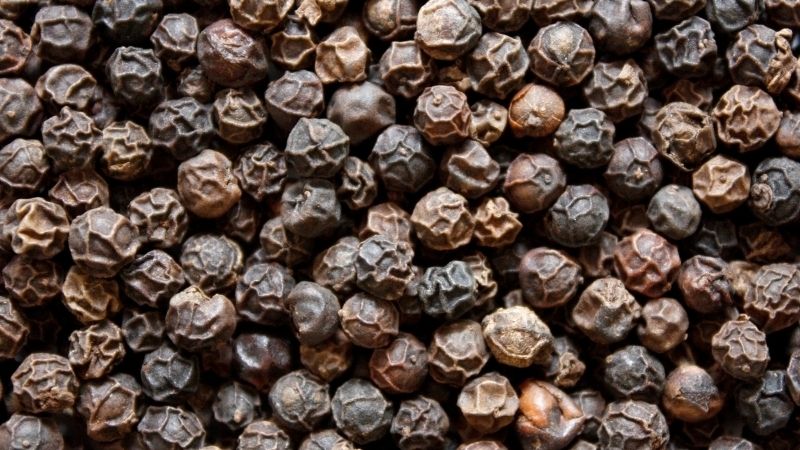
Black pepper is an Indian
Households that enjoy hotter food replace cloves with black pepper to make their food spicier. It is used whole in Arab cooking, though you can grind it up to increase the spiciness of a Middle Eastern dish.
6. Sumac
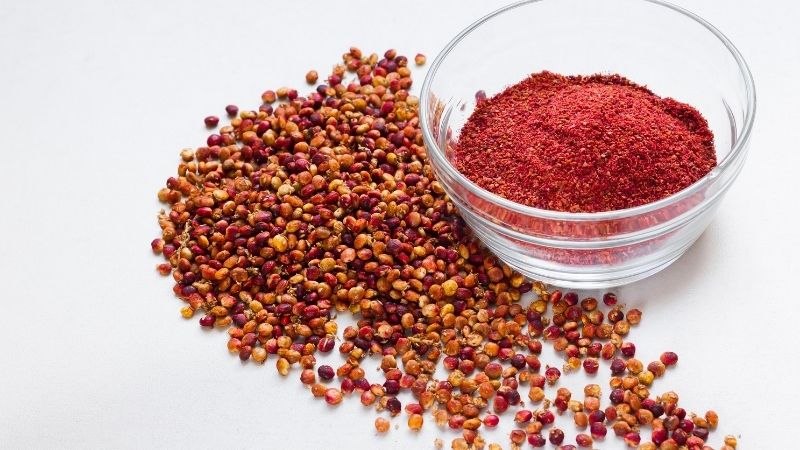
Sumac is an interesting
Sumac neutralizes the sweet aspects of some of the ingredients, which helps emphasize the dish’s spiciness. Let’s take the examples of cinnamon and Paprika.
Both of these ingredients are spicy to an extent and have a sweet dimension. Sumac is tangy enough to overpower the hints of sweetness, which brings out the spicier side of cinnamon, Paprika, and even dry coriander.
7. Turmeric
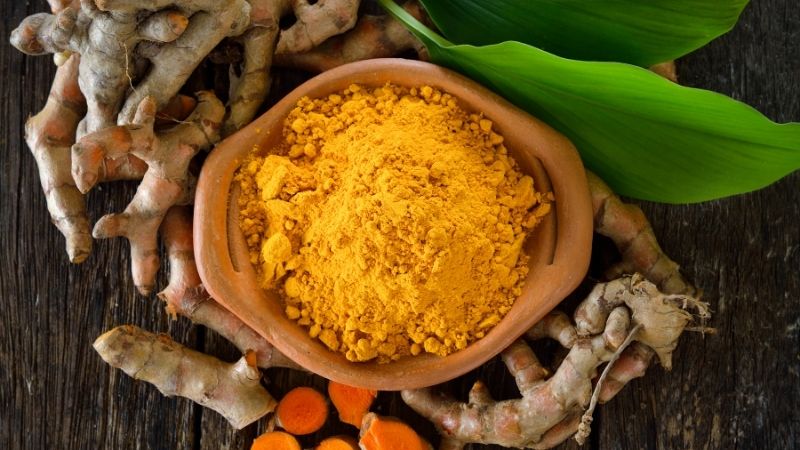
Turmeric is another
Turmeric isn’t outright spicy and has a noticeable, sometimes offputting, bitter taste. That’s why a minimal amount of turmeric is added to Middle Eastern dishes. It helps bring out the flavor of the meat and vegetables being cooked.
It can mute the milder flavors in a significant enough quantity, allowing the spicier ingredients to be more noticeable.
8. Cumin
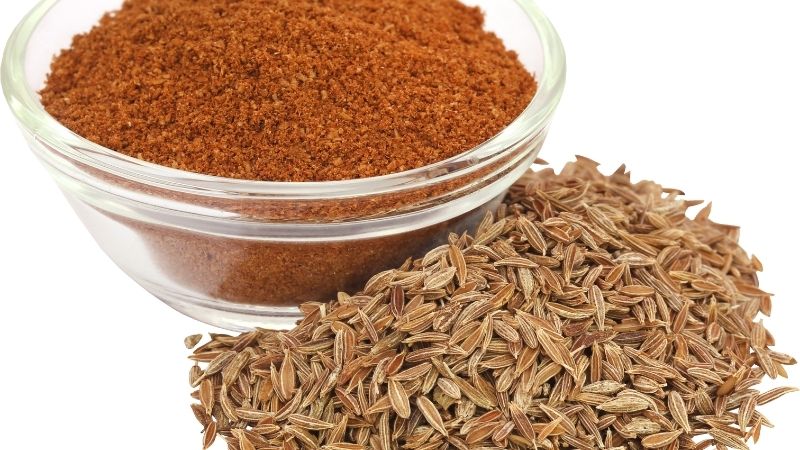
Cumin is one of the most essential spices in Middle Eastern cooking because (in small quantities) it is mild enough to provide a barely noticeable aftertaste. However, doubling the amount of cumin used in a dish can make the result significantly spicier.
Cumin is one-third as spicy as the milder Mexican spices, which also shows the difference between the heat factor of Middle Eastern cuisine and Mexican food.
9. Baharat Spice Mix
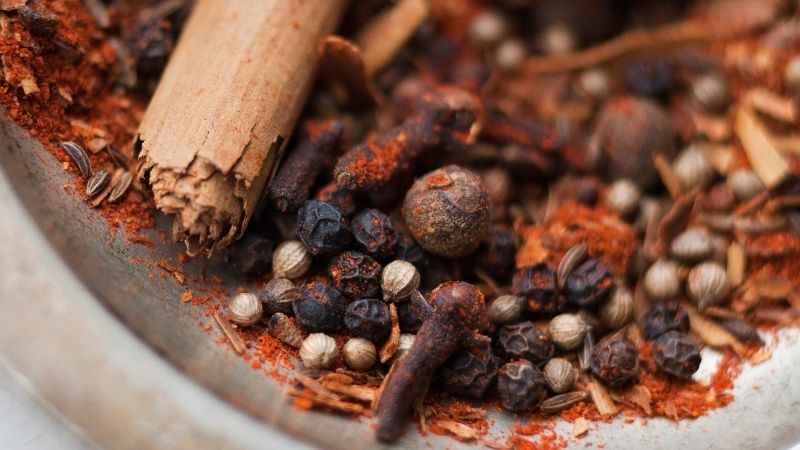
One of the most used spices in Middle Eastern food is a combination of different spices. Don’t let the exotic name trick you because the word ‘baharat’ literally translates to ‘spices.’ Different households have their own variations of the mix based on their family traditions.
You can find generic Baharat mix at grocery stores in the Middle East. It contains black pepper, cardamom, dried coriander, nutmeg, and cloves. It also features a bulk of the spices listed above but none in enough quantity to make the overall mix too spicy.
You can add more baharat
Getting Creative with Middle Eastern Spices
Now that you’re familiar with the essential spices used in Middle Eastern cooking, it’s time to get creative!
Spice Up Boring Basics
Liven up everyday foods by adding Middle Eastern spices. Stir smoked paprika and cumin into canned beans or chickpeas for an instant flavor boost.
Mix turmeric, black pepper, and lemon juice into plain Greek yogurt for an easy dip or sandwich spread.
Make Dynamic Dual-Purpose Rubs
Whip up a custom dry rub with a blend of spices like sumac, paprika, cumin, and black pepper. Use half to season chicken, lamb, or seafood before grilling or roasting.
Reserve the rest to sprinkle on at the end for a flavorful finishing touch.
Craft Your Own Spice Blends
For a personalized
Use your homemade blend to add instant flavor to everything from eggs to popcorn.
Simmer Middle Eastern-Inspired Soups
Elevate a basic vegetable soup by simmering spices like cumin, cinnamon sticks, allspice berries, and fresh turmeric in the broth. Pour it over chickpeas or lentils for a hearty, nourishing soup.
Whip Up Spiced Salads
Toss crisp vegetables or greens with a lemony vinaigrette seasoned with Aleppo pepper, sumac, and mint. Or sprinkle zesty dukkah over a salad for added crunch and
6 Tips for Cooking with Middle Eastern Spices
- Buy whole spices when possible and grind just before using. They hold their flavor and aroma better.
- Heat spices briefly in oil to intensify their flavor. Be careful not to burn them.
- Wake up pre-ground spices by dry roasting briefly in a pan.
- Toast cumin seeds, coriander seeds, and peppercorns before grinding for improved flavor.
- Add spices early on when using tougher spices like cinnamon sticks or whole allspice. Add delicate ones like dried mint or sumac at the end.
- Taste dishes as you cook and adjust
spice amounts as desired. Start with less and add more to suit your taste.
With this guide to the quintessential spices used in Middle Eastern cuisines, you’re ready to start cooking vibrant and aromatic dishes. Explore new

